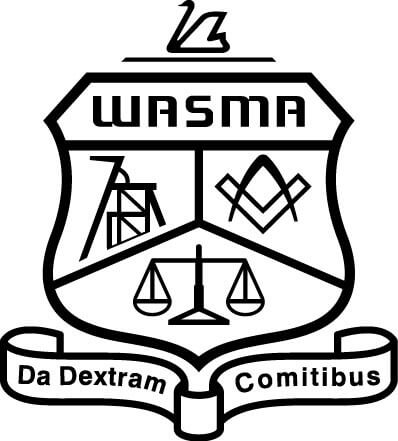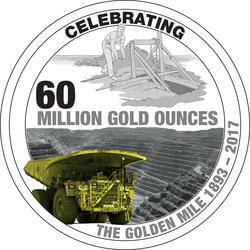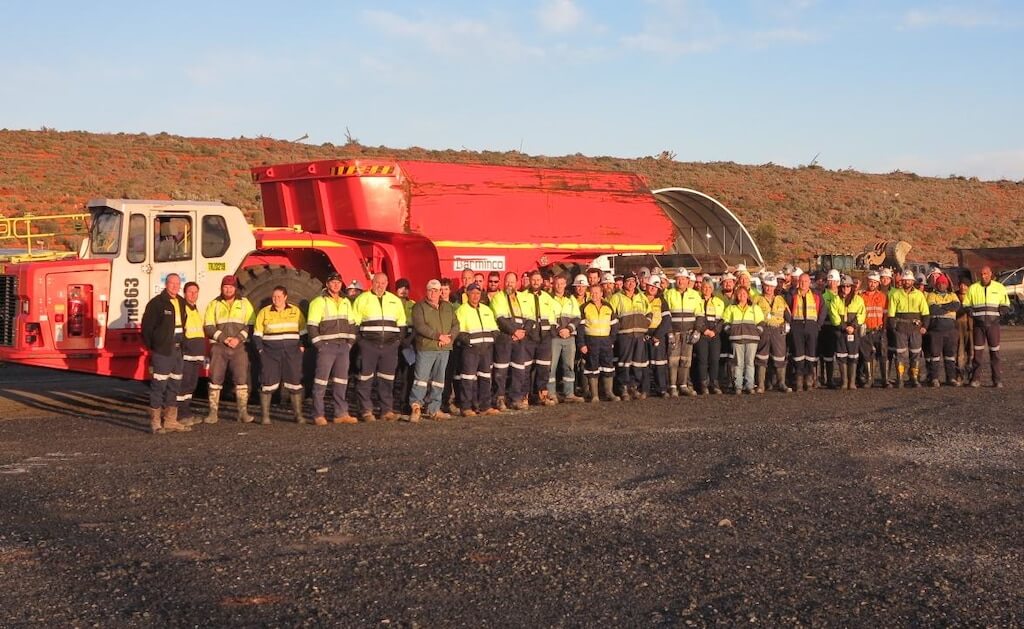| Matthew Wood, currently President, Chief Executive Officer and a Director of Five Star Diamonds Limited has been appointed as Chairman of Antler Hill.
Matthew s an outstanding mineral resource explorer and developer with over 25 years global industry experience in mining and commodities investment. He has managed successful deals in diamonds, coal, energy, ferrous metals, base and precious metals and other commodities. His unique skills in technical and economic evaluation of resource opportunities has been proven by an impressive record of nurturing resource deals from early stage, to market listings and successful exit strategies for his investors. Mr. Wood has an Honours Degree in Geology from the University of New South Wales and a Graduate Certificate in Mineral Economics from the Western Australian School of Mines. |
This mining graduate went to market, this mining graduate stayed home, this mining graduate ate humble pie and this mining graduate got none
Simon Cohen Queensland University Graduate
MEC Mining – Managing Director
The pathways to developing a successful career in mining begins with a first step. During the recent mining downturn the lack of this first step has left many mining graduates without an opportunity and has certainly contributed to new undergraduate intakes at record lows. There is no doubt the industry will pay for this issue over the next 10 years and beyond, but reality is we are where we are, and we need to make the best of it and focus on changing this future trend. Encouraging and inspiring future generations that mining opens a range of possibilities is something all of us in the industry can assist with.
I reflected on what the industry was like when I graduated close to 20 years ago and the conditions are remarkably similar. So how did all my cohort make it through and end up with successful mining careers? Well the answer is not all did, but the determined ones made it work. To make any opportunity work you have to consider the possibility of alternative futures, and in this situation that a mining degree is not just a stepping stone into a mining operation career but a range of possible careers. I thought I would share a few of these paths.
Path 1 – The first graduate hit the market hard, accepted the knock backs from all the graduate programs as part of applying for 100 + jobs and built resilience throughout the journey. They eventually landed a graduate role with a small and remote mining operation FIFO on 3 weeks on 1 week off roster. While the opportunity seemed like a career step to nowhere, it actually presented an opportunity to be hands on, develop an extraordinary knowledge of all aspects of the mining operation and ended up fast tracking their career to a mining manager within a 10 year window. The perseverance and resilience payed off.
Path 2 – The second graduate decided not to leave their home town and to use the opportunity to add a second degree in a financial discipline, along with picking up part time work as a consultant while studying their 2nd degree. When they graduated 3 years later they were well placed to enter the banking sector and developed an incredible career advising companies on mergers, acquisitions and sales of mining assets. 10 years on they were a senior partner in a private firm. Taking a different path by leveraging their initial skill opened opportunities most others didn’t think of.
Path 3 – The third graduate didn’t enter a professional discipline out of uni. They started their mining career by driving haul trucks, progressing to an excavator and then to a shift supervisor within 3 years. They returned to a professional role soon after and because of their operational and people management experience they gained, rapidly progressed their career to general manager within 10 years.
Path 4 – The forth graduate like most others applied for jobs straight out of uni, but rapidly lost interest in the mining market, their goal for a mining career was driven by money rather than a true desire to get out on site. The opportunities that did come their way were not taken due to not enough money, the site was too remote, roster was too long, or not wanting to relocate away from home. They couldn’t see what the other 3 could and needless to say their career did not prosper.
Resilience, agility and open-mindedness are qualities that most mining leaders i meet have embraced to make it to where they are today. Everyone took a first step in their career to get to where they are, what was your first step in mining?
Boom in jobs for WA engineers with surge in activity in the mining sector
The number of jobs being advertised for mining engineers in Western Australia has almost doubled over 12 months, signalling what industry leaders say is renewed increase in resource activity.
The change comes after several years of downturn for many commodities in the sector, during which jobs for engineers, geologists and others have often been scarce.
According to Engineers Australia, the low point over the past decade for mining engineering jobs was in April 2016, when only 101 vacancies were recorded for the month.
However, the peak body’s latest Engineering Vacancies report shows the number of vacancies for mining engineers jumped to 188 in April 2017.
In April 2017 there were more vacancies recorded for mining engineers than any other engineering occupation in WA,” the report, which analyses Commonwealth Department of Employment figures, said.
More investment in the sector
Association of Mining and Exploration Companies chief executive Simon Bennison said there was more investment in the sector.
“You’re seeing quite a bit of activity in the merger and acquisitions phase, particularly in the situation of gold, where again you’re seeing companies buy into smaller operations to get them through the development phase and up and into production,’ Mr Bennison said.
“I think that’s creating opportunities for mining engineers and the other occupations like mining managers and so forth, that are associated with that transitional phase into production.”
There are predictions the current shortage of mining engineers will grow.
Professor Sam Spearing from the Curtin University’s School of Mines said there had been a 30 per cent drop in enrolments at the school in the past two years, partly because of media reports on the downturn.
“We will probably have a shortage as we move forward, because as I say, there is this bad press, which is, in my opinion, ridiculous,” he said.
He also attributed it to the Government’s decision last year to take mining, metallurgy and petroleum off the skills occupation list, meaning foreign students could not apply for permanent residence after doing the course.
KCGM celebrates Golden Mile-stone
Congratulations to all WASM Graduates working with KCGM
KCGM, a 50:50 joint venture between North American giants Newmont Mining and Barrick Gold, is also celebrating 20Moz produced by the company since 1989.
“The Golden Mile has a fascinating history, with an abundance of colourful mining characters and even more colourful yarns,” KCGM general manager Ian Butler said.
“I am extremely proud to be associated with KCGM as we pour this historically significant ounce.
“It was over 114 years ago that the area produced its record of 1,225,700 ounces from a grade of 34.4 grams per tonne in 1903. In 2016, production was 764,000 ounces with an average mined grade of 1.92gpt and average head grade of 2.19gpt.”
The original location of the Golden Mile in 1897 was from Hannan’s Brownhill, Paringa, North Kalgurli and Brookmans Boulder at the north end through to Lake View South, Boulder Main Reef and Chaffers at the south end.
Over time it was extended to also include Croesus (Kallaroo) at the north through to the Imperial and Hannan’s Star at the south, a distance of about 3.8km or more than two miles.
Although not technically part of the Golden Mile, Mount Charlotte also has been entwined with Australia’s most prolific gold district.
The Golden Mile once hosted over 80 underground mines, but KCGM’s current operations comprise the famous Super Pit and the Mt Charlotte underground to the north.
The Golden Mile produced its 50 millionth ounce in 2003, and KCGM said it had its sights set on the 70 millionth ounce.
The company is holding a community open day at Hannans North tourist mine this Saturday to mark the milestone.
A limited edition commemorative 1oz silver medallion with 24 carat gilded gold has been produced through The Perth Mint and will only be available for purchase at Hannans North.
The company has also painted a 793 haul truck and will present employees with a commemorative gift.
Ken Brinsden’s Pilbara cashed up and ready to go
WASM Alumni High Achiever Profile Ken Brinsden
PILBARA Minerals has raised US$100 million (A$132.3 million) in a bond issue, paving the way for a final investment decision for the A$234 million Pilgangoora lithium-tantalum project.
The senior secured bond issue was fully subscribed by a combination of large Australian and overseas funds.
The five-year bonds are secured against all project assets, share pledges and a guarantee from Pilbara.
Settlement is expected next week ahead of the first drawdown in August.
Pilbara managing director Ken Brinsden said the company was pleased with the response during the bookbuild.
“This represents a strong endorsement of the Pilgangoora project’s outstanding economics and credentials as one of the largest and most important new hard rock lithium and tantalum projects in the world, and the rapid progress which Pilbara Minerals has made to advance this globally significant lithium project towards development,” he said.
The company said the proceeds would “underpin the project financing package”.
Pilbara had cash of $65.5 million at the end of March, which has allowed early project works to proceed.
It will also receive $20 million from new offtake partner Ganfeng Lithium.
Long-lead items will start to arrive on site from July, and the company remains on track for first production in the March quarter of next year.
Average annual production over Pilgangoora’s 36-year life is set to be 314,000 tonnes of 6% spodumene concentrate and 321,000 pounds of tantalite at cash operating costs of $US196 per tonne CFR in the first 15 years, and $207/t over the life of the mine.
Under the base case 2Mtpa production rate, Pilgangoora has a post-tax net present value of A$709 million, at a 10% discount rate, with a 2.7-year payback period and internal rate of return of 38.1%.
The company will also considering doubling production early in the project life, with capital costs estimated at $128 million.
Shares in Pilbara rose by 3% to 39.7c.
Carnegie and WASM Alumni host successful event
Carnegie’s headquarters in Belmont hosted the best technical event for the WASM Alumni.
70 attendees from various sectors of the resources industry dressed up in their orange jackets and were treated to the very first up close and personal tour of Carnegie’s latest batteries, solar panels and technology not to found any where else in the world. Michael Ottaviano took on the role of Master of Ceremonies and as with most of our graduates, excelled at the role.
The highlights were Paul Vollant from TNG, a quiet thoughtful frenchman from China building renewable’s in the NT.
David Flanagan and Mike Ottaviano on the importance of WASM and the effect the disruptive technology is going to have on our students.
John Davidson, “you can’t stand still as you risk from being the disrupter to the disruptive, that’s how fast this technology is moving”.
Mark Thompson from Talga Resources, Australians conquering Sweden -“WA should focus on exporting our intelligence and technology to countries with little sun, polluting air. We live in such a perfect place we forget how other countries face enormous environmental challenges every day”
WASM Alumni would like to thank Sandvik for their support
AMPS Rising Star People’s Choice Awards
Director of Advance Mining Production Systems Brendan Parker is the chairman of the WASM Alumni Events Subcommittee.
His company AMPS is up for the People’s Choice Award and needs your help to get AMPS over the line.
Get your vote in before June 13/2017
Advanced Mining Production Systems is a leading mining technical services and training consulting company in Fremantle. AMPS are a dedicated team of experienced engineers focused on developing meaningful relationships with their clients. AMPS specialise in open pit and underground mining technical services optimisation inclusive of engineer training courses. AMPS have an App due for release late 2017 which delivers increased accuracy and efficiency for underground mining data capture. AMPS are passionate about working with their clients to implement industry proven procedures, robust systems, processes & documentation. AMPS proven methods assist in future-proofing mining operations ensuring their standards are a legacy.








